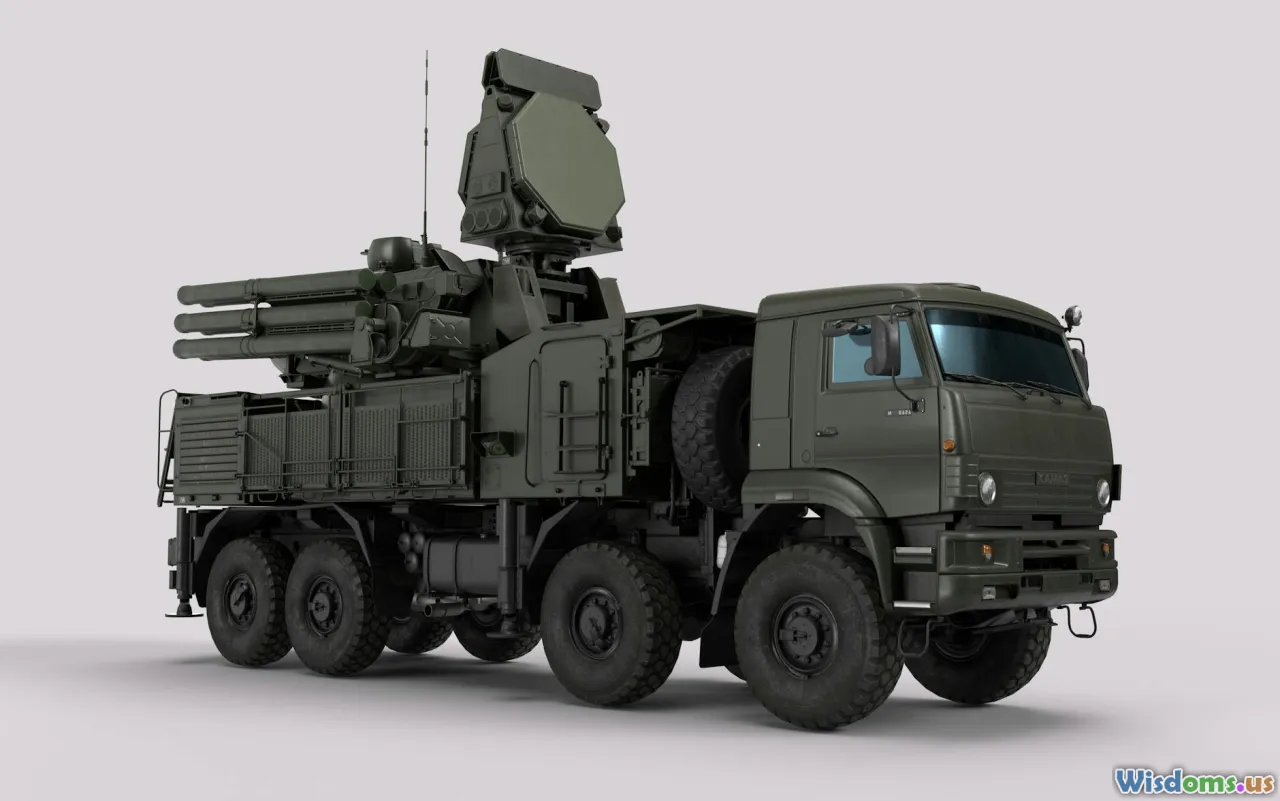
A Step by Step Guide to Understanding Hypersonic Missiles
8 min read Explore the world of hypersonic missiles with a comprehensive step-by-step guide that reveals their technology, challenges, and strategic importance. (0 Reviews)
A Step by Step Guide to Understanding Hypersonic Missiles
Introduction
Hypersonic missiles represent one of the most revolutionary advancements in military technology in recent decades. Capable of traveling at speeds greater than five times the speed of sound (Mach 5+), these weapons can outpace traditional missile defense systems with alarming precision and maneuverability. But what exactly makes hypersonic missiles so formidable, and why are militaries around the world racing to develop and deploy them? This step-by-step guide unpacks the complexities behind hypersonic technologies, their strategic significance, and the challenges faced in their creation and mitigation.
1. What Are Hypersonic Missiles?
At their core, hypersonic missiles are weapons that travel at speeds exceeding Mach 5, or roughly 3,800 miles per hour. Unlike traditional ballistic missiles, which typically follow predictable, high-arching trajectories, hypersonic missiles can maneuver mid-flight, making detection and interception vastly more difficult.
Hypersonic missile categories divide primarily into two types:
-
Hypersonic Glide Vehicles (HGVs): Fired atop a rocket booster, HGVs re-enter the atmosphere and glide toward the target at hypersonic speed, able to change course during flight.
-
Hypersonic Cruise Missiles (HCMs): Powered by high-speed air-breathing engines, such as scramjets, they sustain hypersonic speeds through the atmosphere continuously.
For example, Russia's Avangard HGV reportedly achieves speeds of up to Mach 27 with maneuverability that challenges current missile defenses. Meanwhile, the U.S. military’s Hypersonic Conventional Strike Weapon (HCSW) program focuses on the development of air-launched HCMs.
2. The Science Behind Hypersonic Flight
Traveling at hypersonic speeds introduces unique aerodynamic and thermodynamic challenges. At these speeds, the friction between the missile's surface and the atmosphere generates extreme heat—upwards of thousands of degrees Celsius—that can melt conventional materials.
Key scientific considerations include:
-
Thermal Protection Systems (TPS): Hypersonic vehicles require advanced shielding such as ablative coatings or heat-resistant ceramics to withstand the intense heat.
-
Scramjet Engines: Supersonic combustion ramjet (scramjet) technology enables sustained high-speed flight by compressing incoming air at supersonic speeds before combustion. This differs from traditional jet engines that slow airflow to subsonic speeds.
-
Aerodynamic Maneuverability: Maintaining stability while performing sharp maneuvers at hypersonic speeds requires precision engineering and advanced control systems.
Researchers often use wind tunnels and computational fluid dynamics simulations to study airflow and thermal properties crucial for effective hypersonic design.
3. Global Hypersonic Missile Programs
The race to develop hypersonic weapons is intensifying among global powers. Here's a snapshot of prominent programs:
-
United States: The U.S. Defense Advanced Research Projects Agency (DARPA) leads efforts through projects like the Hypersonic Air-breathing Weapon Concept (HAWC) and the Conventional Prompt Strike (CPS) initiative designed to develop deployable hypersonic systems.
-
Russia: With deployments such as the Avangard and Tsirkon missiles, Russia emphasizes deterrence and increased first-strike capability.
-
China: China's DF-ZF HGV and the Xingkong-2 missile feature in the country’s quest for advanced tactical and strategic capabilities.
-
India: Developing the Hypersonic Technology Demonstrator Vehicle (HSTDV), India is also working towards mastery of scramjet technology to enhance its missile systems.
Each nation views these weapons as game-changers that could overwhelm current missile defenses, drastically shortening response times and destabilizing traditional deterrence models.
4. Strategic Importance and Implications
Hypersonic missiles provide unmatched advantages:
-
Speed and Surprise: Operating at Mach 5 or higher drastically reduces the time between launch and target impact—from tens of minutes to mere minutes—restricting reaction room.
-
Penetration Capabilities: Their maneuverability and lower flight altitudes help them evade radar and missile defense shields.
-
Range Versatility: Hypersonic cruise missiles can travel several thousand kilometers, while glide vehicles launched from ballistic missiles can extend global strike reach.
However, their rise challenges existing arms control frameworks and prompts urgent questions about escalation management in conflicts. For instance, increased hypersonic capabilities may incentivize rapid decision-making under extreme time pressure, potentially leading to misunderstandings or accidental conflicts.
5. Current Challenges and Future Outlook
Despite impressive progress, hypersonic missile technology faces notable hurdles:
-
Materials Science Limitations: Finding materials that balance strength and heat resistance for long durations is ongoing.
-
Guidance and Navigation: Reliable sensors and control systems that function accurately at hypersonic speeds remain complex to develop.
-
Cost and Scalability: Hypersonic systems demand enormous investment, and integrating them into deliverable warfighting assets presents logistical challenges.
Looking ahead, advancements in artificial intelligence and machine learning may enhance hypersonic missile guidance and operational effectiveness. Moreover, international efforts toward hypersonic defense technologies, such as directed energy weapons and advanced radar systems, are growing concurrently.
Conclusion
Hypersonic missiles electrify the landscape of modern warfare with their incredible speed, maneuverability, and strategic potency. Their continued evolution will not only reshape military doctrines but also necessitate new approaches to defense, diplomacy, and international security frameworks. Understanding the science, technological challenges, and geopolitical implications behind these fascinating weapons is crucial in a world where seconds matter and the strategic balance can shift in the blink of an eye.
As hypersonic technology marches forward, informed awareness allows policymakers, military strategists, and the public to engage thoughtfully with its promises and perils, preparing us all for the future of warfare.
References and further reading:
- Office of the Secretary of Defense, Annual Report to Congress, Hypersonic Weapons (2023)
- NASA Langley Research Center, Hypersonics Program
- Center for Strategic and International Studies (CSIS), Hypersonic Weapons Tracker
- Scientific American, "How Hypersonic Weapons Will Change War" (2021)
Author's note: This guide emphasizes clarity and detail, aiming to demystify hypersonic missile technology for a broad audience interested in military advancements.
Rate the Post
User Reviews
Popular Posts





















